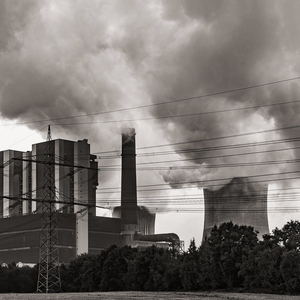
The American Society of Heating, Refrigerating and Air-Conditioning Engineers (ASHRAE) has released Standard 228-2023, which is a “standard method of evaluating zero-net energy and zero-net carbon building performance,” and something that has been sorely needed for many years. Few terms have been more misunderstood or misused than “net zero,” which may be why ASHRAE turned it around and called it “zero net”—yet another descriptor adding to the confusion circling this topic.
In his coverage of 228 for Green Building Advisor, Justin Wolf writes: “In a world gone crazy with greenwashing, it’s refreshing to have at least one sustainability benchmark laid out in black and white. ‘You’re either net zero or you’re not. It’s pass or fail,’” [Paul] Torcellini, a source for the story, says.
But if you look closely you have to wonder if it is not still greenwashing, if it is really black and white, pass or fail, and if net zero or zero net is an appropriate target.
Clarifying confusing territory
The 228 standard is definitely a big step in clarifying net zero, which has been defined in many ways and has even been co-opted by the fossil fuel and other industries to have a completely different meaning. (See Fossil Fuels’ ‘Net-Zero’ Carbon Emissions Scam Is Something Humanity Doesn’t Have Time For.)
Years ago, Passivhaus expert Bronwyn Barry wrote a controversial post in Utility Dive, complaining that advocates of net zero are trying to use the grid as a sort of bank, where they deposit power in summer and withdraw it in winter. Except that doesn’t actually work. Barry writes:
“The reality is that the grid does not have the capacity to store all excess energy generated in summer so buildings employing this ‘fuzzy math’ still require that the grid supply their winter…
Weekly Newsletter
Get building science and energy efficiency advice, plus special offers, in your inbox.

This article is only available to GBA Prime Members
Sign up for a free trial and get instant access to this article as well as GBA’s complete library of premium articles and construction details.
Start Free TrialAlready a member? Log in















One Comment
This is a welcome and insightful evaluation of the net zero scheme that's becoming the base of many flawed public policies. This includes the "enlightened" city of Boston where I live. If in doubt, I have a giant net zero glass building to show you!
https://www.wbur.org/news/2022/12/07/boston-university-unveils-citys-largest-net-zero-building-geothermal
Also, isn't net metering, a scheme adopted by most states in one form or another, based on the net zero philosophy? That's where according to Bronwyn Barry mentioned above "advocates of net zero are trying to use the grid as a sort of bank, where they deposit power in summer and withdraw it in winter."
It reminds me of the selling of indulgences in 15th century Europe where one could wipe off their sins by giving money to the catholic church. I was looking up that topic recently and read this funny quote: Believers gladly handed over their money to the salesmen who promised instant results in catchphrases like the popular, "When the gold in the coffer rings, the rescued soul toward heaven springs".
Net zero carbon is the 2020's version of the middle age catholic indulgence scheme.
http://www.worldhistory.org/article/1902/medieval-indulgence--martin-luther/
Log in or become a member to post a comment.
Sign up Log in